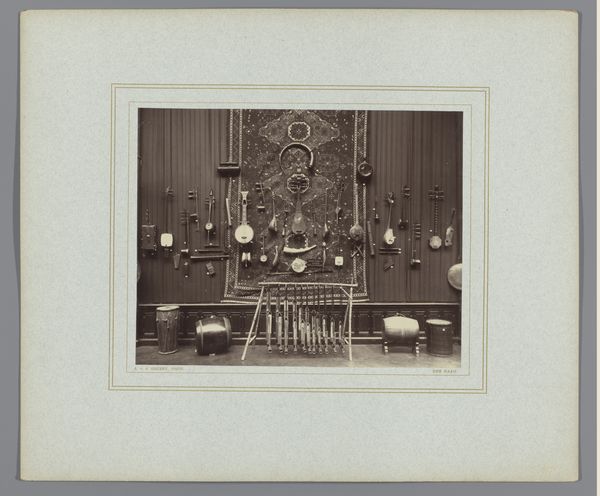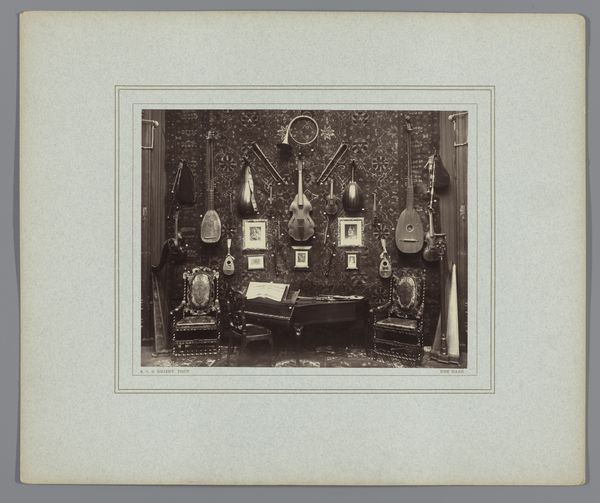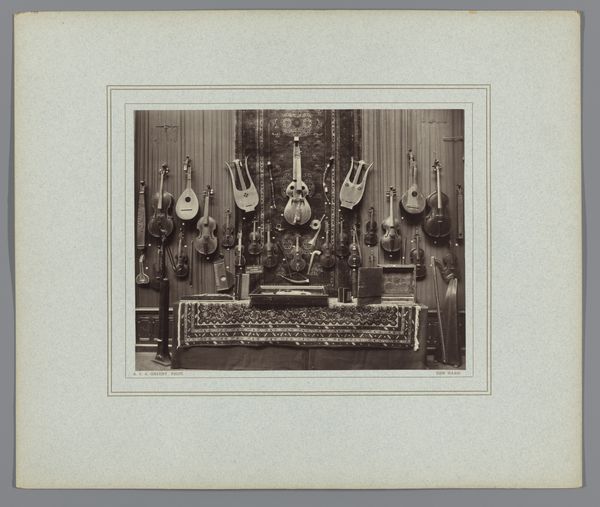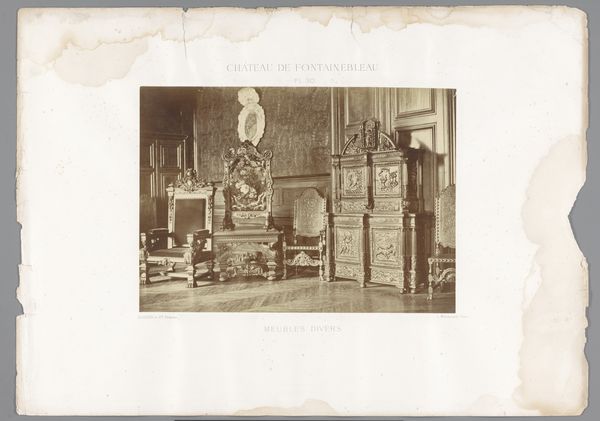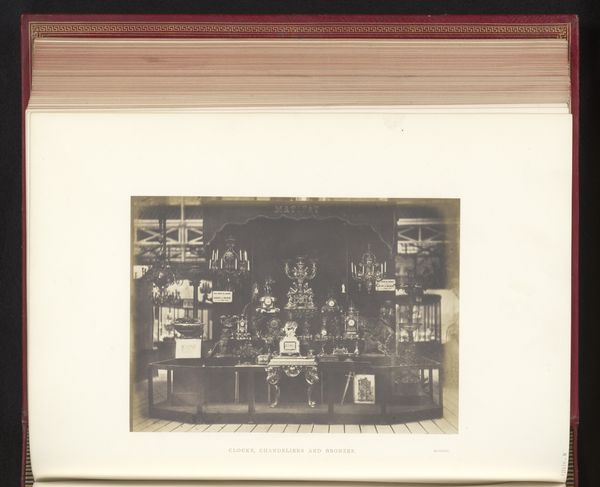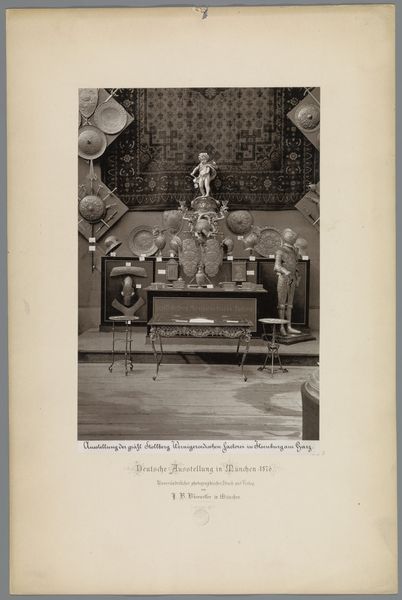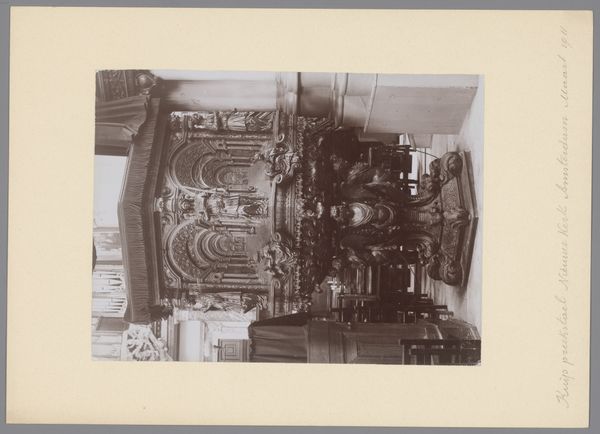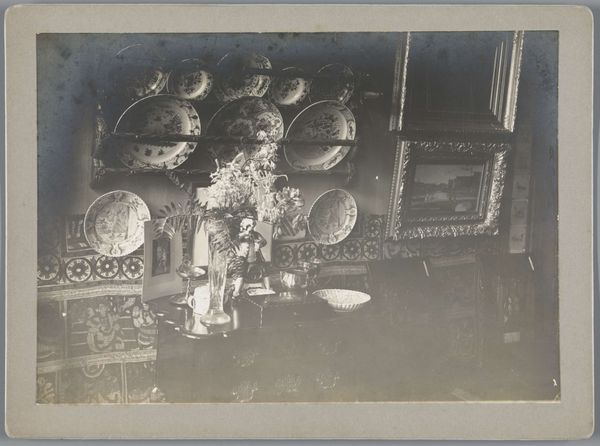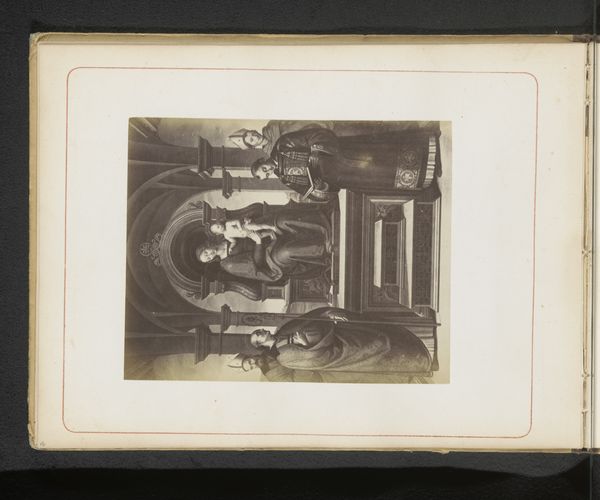
Muziekinstrumenten uit de collectie Daniël François Scheurleer, tentoongesteld in Pulchri Studio in 1893 1893
0:00
0:00
photography, gelatin-silver-print
#
still-life-photography
#
photography
#
orientalism
#
gelatin-silver-print
Dimensions: height 220 mm, width 280 mm
Copyright: Rijks Museum: Open Domain
Editor: This photograph, taken in 1893 by Adrianus van der Grient, shows musical instruments from the Daniël François Scheurleer collection, displayed at Pulchri Studio. There’s an intriguing arrangement, almost like a tapestry of instruments. What cultural narratives do you think are embedded within this display? Curator: It's fascinating how Van der Grient uses the photographic medium to capture this very deliberate arrangement. The collection itself, displayed in the style of Orientalism, immediately brings up the complexities of cultural appropriation and exoticism of the time. The instruments are presented almost as trophies. Notice how they’re meticulously organized. Do you observe any recurring shapes or forms that might hold symbolic significance? Editor: I see lots of circles and crescent shapes. Is that something about the music or the cultures that created them? Curator: Precisely! The circular forms could allude to cyclical patterns found in music itself or echo cosmological symbols prevalent in Eastern philosophies—consider the concept of endless repetition or reincarnation. And yes, the crescent is of course charged with meaning, especially across the Islamic world. Think of the cultural memory these shapes evoke and how that memory is further layered by the act of collection and display within a Western context. Editor: So, it's not just about the instruments themselves but what they represent, or what people at the time *thought* they represented? Curator: Exactly. The act of display turns these instruments into symbols of cultural encounter and exchange, filtered through the lens of 19th-century Orientalism. It prompts us to consider the psychological motivations behind collecting, the power dynamics inherent in display, and the stories we choose to tell ourselves about other cultures through objects. What story do *you* think this photograph tells? Editor: That it's more than just instruments on a wall - it's about relationships, and how people understood each other back then...or maybe misunderstood. Thanks! Curator: Indeed. Understanding the layers of symbolism opens up new ways to interpret art and history.
Comments
No comments
Be the first to comment and join the conversation on the ultimate creative platform.
